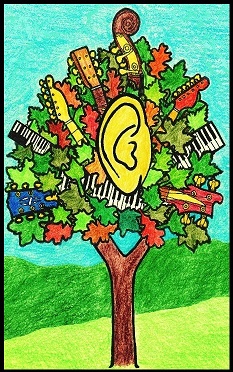 Almost every unaccredited music school has a Default Program. They probably don’t call it that. They probably don’t call it anything. It’s just the tacitly agreed-upon lesson program students get corralled into when they sign up.
Almost every unaccredited music school has a Default Program. They probably don’t call it that. They probably don’t call it anything. It’s just the tacitly agreed-upon lesson program students get corralled into when they sign up.
The Default Program is the music school equivalent of “Number One With a Coke” at your local burger joint. At most music schools, the Default Program is a lesson book that shows how to read music for your instrument, and 30 minutes a week with a teacher to help you get through the book. When you get through Book 1, you go to Book 2. There may be five or six books in a lesson series. For an average adult, it takes four to six months to get through the first method book, sometimes longer for kids.
At the end of five years, you might get through six or seven different method books, or you might not. You may have learned to play a dozen or two dozen pieces, or you might not. The average cost for five years of music lessons, year-round, is about $6k. What do you really get for six grand, and five years of your life? What real-world situations are those years of reading-lessons going to prepare you for?
Many people who work the Default Program for years end up never getting the basic physical conditioning they need in order to play confidently and comfortably. This sentiment is echoed by many experienced teachers, both classical and non-classical.
The most common Default Program lesson books don’t solve problems of basic conditioning. Music teachers whose only criteria for success is how many books you’ve completed are happy to overlook this problem for as long as you are. Many people who get locked into the Default Program go their whole lives without ever getting past the beginner’s learning curve. A good teacher should be able to clear up basic conditioning problems in the student’s first year.
You can fill stadiums with all the people who spent five years or more taking lessons, who still play at no better than an intermediate level because they don’t have the basic conditioning they need in order to play well. On guitar, it’s the old guy with discombobulated, flailing fingers who can’t play above the 5th fret, and can’t play very well below that. On piano, it’s the girl who plays by feeling along the keys like she’s reading braille. When she reaches a difficult passage, she stares at the music that much more intently. She can’t spare even a quick glance down at her hands, or she’ll lose her place in the sheet music. So she plays timidly, in tentative, halting phrases.
Very often, the Default Program produces poor basic playing skills, and no better than decent reading skills. With a modern approach to learning music, you can accomplish a lot more in the same amount of time, for the same amount of money.
The consequence of simply wandering into music school, and saying “sign me up,” is you get shuttled into a dreary, pointless reading program. You have the right as a consumer to ask for something else. But at many schools, there’s nothing else on the menu.
© 2019, 2020 Greg Varhaug